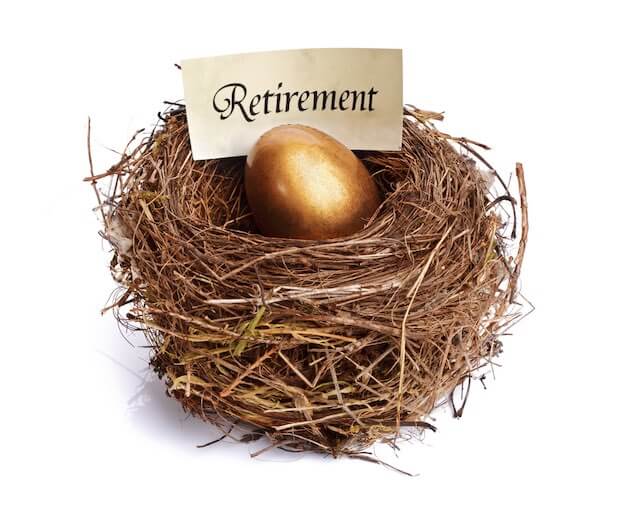Federal employees trying to pave their path to retirement should be aware of the age reduction penalties that come with retiring early. Here we explore the cost of two years (mostly collecting your pension at 60 versus 62) for deferred FERS and immediate retirements.
Deferred FERS Retirement
Not counting a disability retirement, FERS federal employees who have yet to reach their minimum retirement age (MRA, between ages 55 and 57) can leave federal service and still collect a pension check down the road. This is known as a deferred retirement.
As long as they’ve accumulated at least five years of service, federal employees can defer their FERS pension to age 62. With twenty years of service, you can start collecting at 60, but there are penalties.
For each month younger than 62, there’s a 0.416% reduction (5% for every year). So, to start your pension income at 60 means a permanent 10% reduction on your FERS income. At age 61, the annuity is reduced by 5%.
(For illustrative purposes, if the full pension would’ve been $2,000/month at 62, it would be $1800/month if starting at 60.)
No Penalty: Postponed Retirement
If an employee has reached their MRA and has at least 10 years of service, they can postpone their retirement until 62. There’s no option to collect at 60, but that also means there’s no age reduction penalty to worry about. It is important to remember that when you postpone instead of deferring, you are able to re-enroll in FEHB upon retirement assuming you’re otherwise eligible.
When younger than the MRA (with at least 5 years of service), federal employees’ choices when leaving their government jobs (assuming there was no VERA/VSIP offered) include a lump-sum payment of refunded FERS contributions or deferring their FERS annuity. If at their MRA or older (but younger than 62), there are a lot more choices depending on the years of service.
Immediate FERS Retirement
The following age and service combos can claim an immediate unreduced pension:
- At MRA with 30+ years (or 20+ years if under special provisions)
- At age 60 with 20+ years
- At age 50 with 25+ years (if under special provisions)
Folks at MRA with at least 10 years (“MRA+10”) can either postpone their full FERS annuity until age 62 or take an immediate reduced pension.
With all of these above situations, there is a 1% factor when calculating your FERS dollar amount. The only way to get a 1.1% (equates to a 10% pension boost) is to retire at age 62 or older (with at least five years of service) with an immediate pension – no deferring or postponing allowed.
60 vs. 62 – The Cost of Two Years
After working at least two decades in federal service, at age 60 you may face a tough decision – what’s the cost of two more years of work versus two extra years of retirement? 10% off your FERS pension is the price tag.
As an example, let’s say your high-3 salary equals $100,000 at age 60 and you have 20 years of service. The 1% multiple gives you $20,000/year ($1660/month, gross).
Now, if you decide to wait until age 62, a few things change. First, thanks to annual pay raises and such, you’re high-3 salary has grown. For this example, let’s just say it is now $101,000.
Second, you’ve got two more years of service under your belt. But the most important change is now the 1% multiple is 1.1% and that can be significant. (See calculations below.)
- 60 years old: $100,000 x 20 x 1% = $20,000/year ($1,660/mo.)
- 62 years old: $101,000 x 22 x 1.1% = $24,442/year ($2,035/mo.)
Obviously, with such a high-impact decision as this, there are a lot of personal and outside variants to consider, the most important of which is your health. But for this example, let’s make the bold assumption that the federal employee in our example will live to 90 no matter what he chooses. If he retires at 60, the total amount he has collected from FERS would be $600,000 ($20,000 x 30 years). If retiring at age 62, that total goes up to $684,376 ($24,442 x 28 years). That’s $84,376 that would be left on the table by retiring two years early. It is something important to consider when planning your retirement strategy under FERS.
The information has been obtained from sources considered reliable but we do not guarantee that the foregoing material is accurate or complete. Any opinions are those of Benjamin Derge and not necessarily those of RJFS or Raymond James. Links are being provided for information purposes only. Expressions of opinion are as of this date and are subject to change without notice. Raymond James is not affiliated with and does not endorse, authorize, or sponsor any of the listed websites or their respective sponsors. Securities offered through Raymond James Financial Services, Inc., member FINRA/SIPC. Investment advisory services are offered through Raymond James Financial Services Advisors, Inc. Serving Those Who Serve is not a registered broker/dealer and is independent of Raymond James Financial Services.




